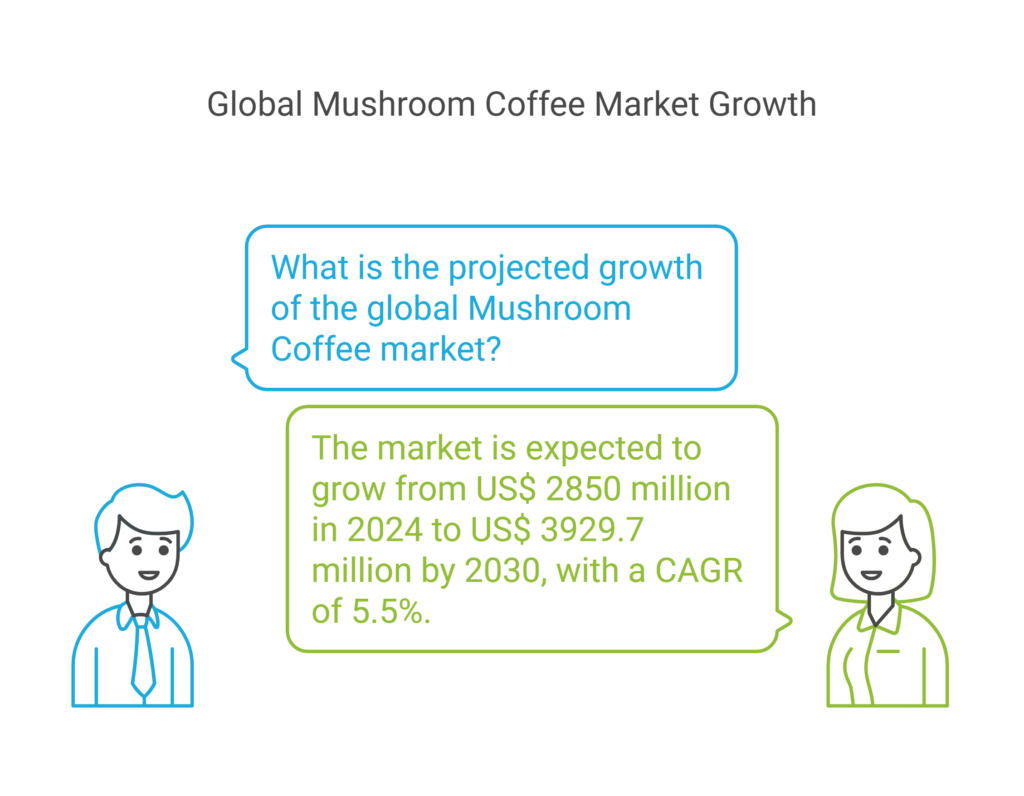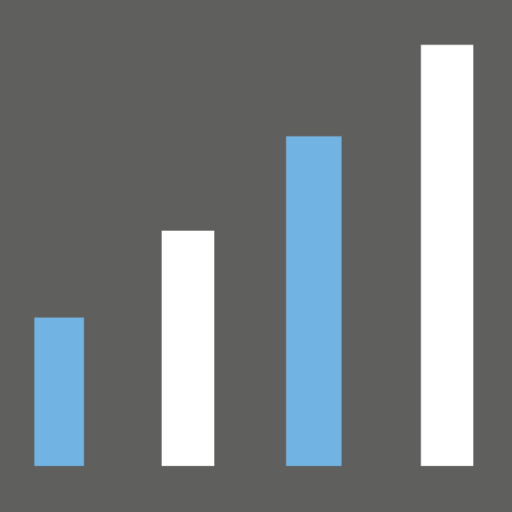Article Outline
1. Market Overview and Introduction to Mushroom Coffee 2. Market Size and Growth Projections (2024-2030) 3. Key Players Shaping the Mushroom Coffee Market 4. Regional Analysis: Market Dynamics in North America, Europe, Asia Pacific, and Beyond 5. Market Segmentation by Type: Caffeinated and Decaffeinated 6. Market Segmentation by Application: Distribution Channels 7. Health Benefits and Consumer Awareness 8. Competitive Factors and Market Strategies 9. Regulatory Environment and Standards 10. Challenges and Opportunities in the Mushroom Coffee Market 11. Future Trends and Innovations in Mushroom Coffee 12. Conclusion: The Future of Mushroom Coffee1. Market Overview and Introduction to Mushroom Coffee
Mushroom coffee is a novel beverage blending coffee beans with medicinal mushroom extracts. It offers a unique taste and potential health benefits, attracting health-conscious consumers seeking alternatives to traditional coffee. This overview explores the key factors driving the market, including rising health awareness and demand for functional foods.
Mushroom coffee typically contains extracts from mushrooms like Reishi, Chaga, and Lion’s Mane. These mushrooms are known for their adaptogenic properties, which may help reduce stress and improve cognitive function. The growing interest in natural health products and the desire for enhanced wellness experiences are fueling market expansion.
2. Market Size and Growth Projections (2024-2030)
The global Mushroom Coffee market is experiencing significant growth. Valued at US$ 2850 million in 2024, it is projected to reach US$ 3929.7 million by 2030. This reflects a Compound Annual Growth Rate (CAGR) of 5.5% during the forecast period. This growth is driven by increasing consumer acceptance and product innovation.
The projected growth is indicative of the increasing popularity of mushroom coffee as a functional beverage. Factors such as rising health consciousness, the demand for natural energy sources, and the expanding distribution channels are contributing to the market’s positive trajectory. The market is expected to see continued expansion as more consumers discover the benefits of mushroom coffee.

3. Key Players Shaping the Mushroom Coffee Market
The mushroom coffee market is populated by both established and emerging players. Key companies include RYZE, Mushroom Cups International, Real Mushrooms, Four Sigmatic, Laird Superfood, Rheal, Om Mushroom Superfood, NeuRoast, DIRTEA, and La Republica Superfoods. These companies are driving innovation and market growth through product development and marketing strategies.
These key players are focused on expanding their product lines and distribution networks. They employ various strategies, including online marketing, retail partnerships, and product diversification, to enhance their market presence. The competitive landscape is becoming increasingly dynamic as new entrants join the market and established players innovate to maintain their positions.
4. Regional Analysis: Market Dynamics in North America, Europe, Asia Pacific, and Beyond
The Mushroom Coffee market exhibits regional variations. North America holds a significant share, driven by health-conscious consumers in the U.S. and Canada. Europe is also a key market, with increasing demand in countries like Germany, France, and the UK. The Asia Pacific region is experiencing rapid growth, particularly in China and Japan, due to rising health awareness.
South America and the Middle East & Africa are emerging markets with growth potential. Brazil and countries in the GCC region are showing increasing interest in functional foods and beverages. Each region presents unique opportunities and challenges, requiring tailored market strategies to capitalize on the local market dynamics and consumer preferences.
5. Market Segmentation by Type: Caffeinated and Decaffeinated
The Mushroom Coffee market is segmented by type into caffeinated and decaffeinated options. Caffeinated mushroom coffee appeals to consumers seeking an energy boost with added health benefits. Decaffeinated options cater to those sensitive to caffeine or seeking a milder alternative without sacrificing the benefits of medicinal mushrooms.
The demand for both caffeinated and decaffeinated mushroom coffee is growing. Caffeinated versions remain popular for morning consumption and energy enhancement, while decaffeinated options are preferred for evening enjoyment and those with caffeine sensitivities. This segmentation allows manufacturers to target different consumer segments with specific needs and preferences.
6. Market Segmentation by Application: Distribution Channels
The Mushroom Coffee market is segmented by application based on distribution channels, including Supermarkets/Hypermarkets, Convenience Stores, and Online Retail. Supermarkets and hypermarkets provide broad access to consumers, while convenience stores offer quick and easy purchases. Online retail is a rapidly growing segment due to its convenience and wide product selection.
Each distribution channel plays a crucial role in reaching different consumer segments. Online retail is particularly important for reaching health-conscious consumers who actively seek out specialty products. The growth of e-commerce and the increasing availability of mushroom coffee on online platforms are driving the expansion of this segment.
7. Health Benefits and Consumer Awareness
The increasing awareness of the potential health benefits of medicinal mushrooms is driving the Mushroom Coffee market. Mushrooms like Reishi, Chaga, and Lion’s Mane are known for their adaptogenic, anti-inflammatory, and cognitive-enhancing properties. Consumers are increasingly seeking functional foods that offer both taste and health benefits.
Education and marketing efforts that highlight these health benefits are crucial for market growth. Consumers are becoming more informed about the potential advantages of incorporating mushroom coffee into their daily routines. This increased awareness is leading to higher adoption rates and market expansion.
8. Competitive Factors and Market Strategies
The Mushroom Coffee market is competitive, with key players employing various strategies to gain market share. Product innovation, marketing, and distribution are crucial competitive factors. Companies are focused on developing new flavors, formulations, and delivery methods to appeal to a wider range of consumers.
Effective marketing strategies, including social media campaigns and partnerships with health influencers, are essential for building brand awareness and consumer trust. Expanding distribution networks through online and retail channels is also critical for reaching new markets and increasing sales. The ability to differentiate products based on quality, health benefits, and taste is key to success.
9. Regulatory Environment and Standards
The regulatory environment plays a significant role in the Mushroom Coffee market. Standards for ingredient sourcing, product labeling, and health claims are essential for ensuring consumer safety and building trust. Compliance with regulations such as those set by the FDA and EFSA is critical for market access and credibility.
Manufacturers must adhere to strict quality control standards to ensure the purity and potency of their products. Transparent labeling practices, including accurate ingredient lists and clear health claims, are necessary for informing consumers and building confidence in the brand. Staying informed about evolving regulations and adapting practices accordingly is vital for market sustainability.
10. Challenges and Opportunities in the Mushroom Coffee Market
The Mushroom Coffee market faces challenges such as consumer skepticism and high production costs. Overcoming consumer skepticism requires education and transparent communication about the health benefits and safety of mushroom coffee. Reducing production costs can make the product more accessible to a wider range of consumers.
Opportunities include expanding the product range, targeting new consumer segments, and leveraging online channels. Developing innovative formulations and delivery methods can attract new customers. Focusing on sustainability and ethical sourcing can appeal to environmentally conscious consumers. The market has substantial growth potential with the right strategies.
11. Future Trends and Innovations in Mushroom Coffee
The future of the Mushroom Coffee market will be shaped by several key trends. Increased product innovation, including new flavors and formulations, is expected to drive market growth. The integration of advanced technologies, such as AI and personalized nutrition, may lead to more customized and effective products.
Sustainability and ethical sourcing will become increasingly important as consumers demand more environmentally friendly and socially responsible products. The growth of telehealth and personalized health platforms may also create new opportunities for mushroom coffee as part of holistic wellness programs. The market is poised for continued evolution and expansion.
12. Conclusion: The Future of Mushroom Coffee
In conclusion, the Mushroom Coffee market is experiencing significant growth and presents numerous opportunities for innovation and expansion. Driven by health awareness and the demand for functional foods, the market is expected to continue its upward trajectory. Key players are focusing on product development, marketing, and distribution to gain market share.
While challenges such as consumer skepticism and regulatory compliance exist, the market’s potential is substantial. Future trends include increased product innovation, sustainability, and the integration of advanced technologies. The Mushroom Coffee market is poised for a bright future as it continues to evolve and meet the changing needs of health-conscious consumers.
For more detailed insights, you can refer to the Mushroom coffee Market report.
Key Market Segments
By Type
| Segment | Description |
|---|---|
| Caffeinated | Mushroom coffee containing caffeine for an energy boost. |
| Decaffeinated | Mushroom coffee without caffeine, suitable for those sensitive to it. |
By Application
| Segment | Description |
|---|---|
| Supermarkets/Hypermarkets | Distribution through large retail chains. |
| Convenience Stores | Quick and easy purchases in smaller retail outlets. |
| Online | Sales through e-commerce platforms. |
Related Reports:
- Global Direct Lithium Extraction Technology Services Market Share, Size, Key Players, Competitive Landscape, Growth Drivers, Trends, Opportunities, Revenue Analysis, and Demand Forecast to 2032
- Global Embodied Intelligent Robot Simulation Platform Market Growth Drivers, Size, Share, Key Players, Competitive Analysis, Trends, Opportunities, Revenue Insights, and Demand Forecast to 2032
- Global Anion Exchange Membrane (AEM) Electrolysis Market Size, Opportunities, Share, Competitive Landscape, Key Players, Growth Drivers, Trends, Revenue Analysis, and Demand Forecast to 2032
- Global Self-Sovereign Identity (SSI) System Market Size, Share, Competitive Analysis, Key Players, Growth Drivers, Trends, Opportunities, Revenue Analysis, and Demand Forecast to 2032
- Global Edible Flowers in Bag Market Size, Share, Key Players, Competitive Landscape, Growth Drivers, Trends, Opportunities, Revenue Analysis, and Demand Forecast to 2032





